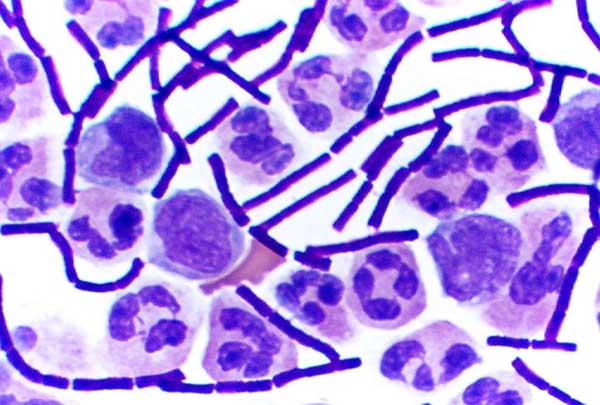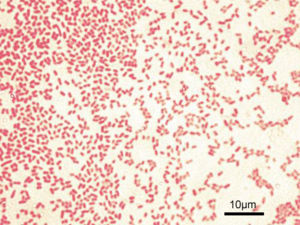Mycobacterium leprae
Staining and Culturing Bacteria
Most Common Stains
Simple Stain
Gram Stain
Because bacteria are small, transparent and colorless, it's often impossible to see them under the microscope without some sort of stain. A stain is a great way to color the bacteria so it is easier to see, as well as identifying and organizing it. There are 2 main types of stains you can do to bacteria-a simple stain, and a Gram stain.
In a simple stain, you want to mount bacteria onto a slide using proper smear techniques. This will ensure that you have a thin layer and only a small amount, otherwise it will be very difficult to find under the microscope. Next you will stain the bacteria a color. Common stains include methylene blue, crystal violet, and basic fuchsin. The stains have special cells called chromophores, which are color bearing ions and tend to be slightly positive. Bacteria tend to be slightly negative, so the two attract, which allows the stain to stick to the bacteria. This stain is used mostly to view the organisms better.
In contrast, you can also use a Gram stain. Christian Gram created the gram stain in 1884, and it has been used ever since. The Gram stain places organisms into two categories- Gram positive, or Gram negative. Gram positive will turn a purple or blue color, while Gram negative will turn a pink or red color. The stain crystal violet is used to stain the organisms, and you can find basic characteristics about the organism based on the color it turns. The main difference between the two groups is based on what their cell walls are composed of. Gram positive bacteria have a cell wall composed of peptidoglycan, while gram negative bacteria have a cell wall composed of polysaccharides and lipids. While this stain is a good initial step in organizing and placing bacteria into groups, it doesn't always work. There are several bacteria that can stain both negative and positive, and others do not stain at all.
As you can see from these photos, Gram negative bacteria will turn red, (right) and Gram positive bacteria will turn blue or purple, (left.)
Mycobacterium leprae are gram-positive bacteria. They would look similar to the photo on the left.
Check out how bacteria can effect YOU!

